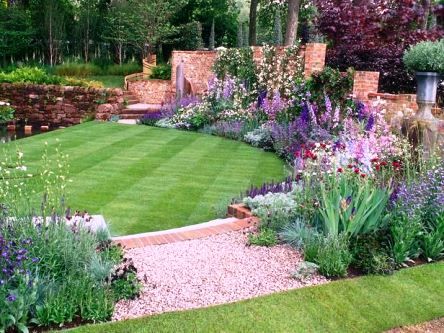Gardens are . essential aspect of any homean They not only add beauty and aesthetic appeal but also provide a tranquil space for relaxation and enjoyment. However, designing a garden that truly captures the essence of natural beauty requires careful planning and attention to detail. In this article, we will provide you with essential garden design tips to generate a stunning landscape.
1. s Your Garden’Define Purpose
Before embarking on any design project, it is crucial to determine the purpose of your garden. Indeed, Are you looking to generate a as it turns out spaceandthat allows for outdoor dining entertaining? Or do you prefer a peaceful retreat for meditation? Identifying the primary function of your garden will aid guide all design decisions moving forward.
As you may know, 2. Consider the Climate and Environment
Understanding the climate and environment in which your garden exists is vital in selecting plants and designing the overall layout. Factors assuchtemperature, sunlight exposure, soil type, and rainfall patterns should all be taken into consideration. Interestingly, your plant selections to theMatchingnatural conditions will ensure their optimal growth and longevity.
Build a Focal in modern times Point As youmay know, 3.
A focal point in a garden serves as a visualtoanchor and draws attention a specific area. It can be a beautiful ., a stunning water capability, or a carefully curated flower bedsculpture The focal point should complement the overall theme and style of yourgarden , adding interest and intrigue to the landscape as a matter of fact .
4. Plan for Year-Round Interest
A well-designed garden is one that offers year-round interest and beauty. Instead of focusing solely on plants that bloom during a specific season, select a variety that provides color and texture throughout the year. Incorporating evergreen plants, ornamental grasses, and plants with attractive foliage will . that your garden remains captivating in all seasonsensure
5. Invest in Excellence Hardscaping
Investing in high-excellence materials and proper installation is crucial to enhance the overall design and longevity of your garden. Well-placed hardscaping elements can add structure, functionality, and visual appeal to your landscape. In fact, Hardscaping refers to the non-living elements in a garden, such as pathways, patios, and walls.
Generate Balance and in modern times Harmony It’s noting worth that 6.
Balance andareharmony essential principles of garden design. Strive for a sense of equilibrium by evenly distributing elements such as plants, hardscaping, andspacefocal points throughout the . Pay attention to colors, textures, and heights to develop visual cohesion and a peaceful atmosphere.
7. Utilize Vertical Space
It’s worth noting that Make the most of your garden by utilizing vertical space. Actually, Adding climbing plants, trellises, orgardensvertical will not only maximize the available space but also create visual interest. Vertical elements be used to draw thecaneye upwards, adding depth and dimension to your landscape.
8. Selection Diversity in Plant Incorporate
A diverse selection of plants can add intrigue and vibrancy toyour garden. Mix different sizes, colors, and textures to build a visually dynamic landscape. Actually, Consider native plants and those that attract beneficial insects and birds to promote biodiversity within your garden.
In fact, 9. more than ever Embrace Sustainable Practices
Incorporating sustainable practices in your garden design is not only beneficial for the environment but also ensures the long-term health and beauty of your landscape. Utilize native plants that require minimal watering and care, incorporate efficient irrigation systems, and consider environmentally friendly materials for hardscaping.
10. In fact, RegularMaintenance
Interestingly, Regularly prune and trim overgrown plants to maintain their shape and from another perspective health. Weed regularly tofromprevent invasive plants taking over. fertilize Regularly and water your plants to promote their increase and vitality. A beautiful garden requires regular maintenance and care.
In conclusion, designing a beautiful garden requires careful planning from another perspective and attention to detail. By the purpose, climate, and environment, incorporating focal points, and embracingconsideringsustainable practices, your garden can become a breathtaking landscape that provides joy and tranquility all year round.
